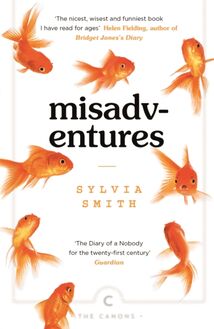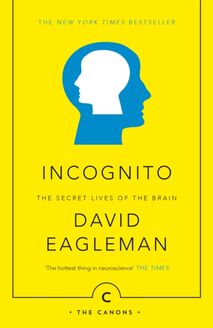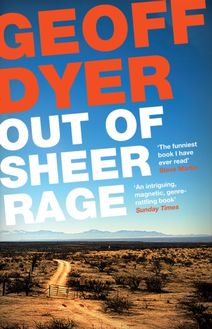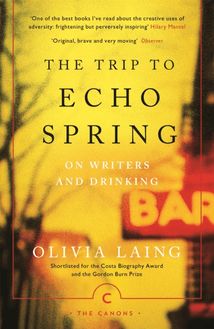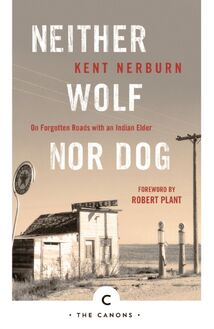-
 Univers
Univers
-
 Ebooks
Ebooks
-
 Livres audio
Livres audio
-
 Presse
Presse
-
 Podcasts
Podcasts
-
 BD
BD
-
 Documents
Documents
-
- Cours
- Révisions
- Ressources pédagogiques
- Sciences de l’éducation
- Manuels scolaires
- Langues
- Travaux de classe
- Annales de BEP
- Etudes supérieures
- Maternelle et primaire
- Fiches de lecture
- Orientation scolaire
- Méthodologie
- Corrigés de devoir
- Annales d’examens et concours
- Annales du bac
- Annales du brevet
- Rapports de stage
La lecture à portée de main
Vous pourrez modifier la taille du texte de cet ouvrage
Découvre YouScribe en t'inscrivant gratuitement
Je m'inscrisDécouvre YouScribe en t'inscrivant gratuitement
Je m'inscrisEn savoir plus
Vous pourrez modifier la taille du texte de cet ouvrage
En savoir plus

Description
Sujets
Informations
| Publié par | Canongate Books |
| Date de parution | 03 mai 2018 |
| Nombre de lectures | 0 |
| EAN13 | 9781786893734 |
| Langue | English |
Informations légales : prix de location à la page 0,0400€. Cette information est donnée uniquement à titre indicatif conformément à la législation en vigueur.
Extrait
John Edgar Wideman ’s books include American Histories, Philadelphia Fire, Brothers and Keepers, Fatheralong, Hoop Roots and Sent for You Yesterday . He is a MacArthur Fellow and has won the PEN/Faulkner Award twice and has been a finalist for the National Book Critics Circle Award and National Book Award. He divides his time between New York and France.
ALSO BY JOHN EDGAR WIDEMAN
Fanon: A Novel
Briefs: Stories
God’s Gym: Stories
The Island: Martinique
Hoop Roots: Basketball, Race, and Love
Two Cities: A Novel
The Cattle Killing: A Novel
Fatheralong: A Meditation on Fathers and Sons, Race and Society
All Stories Are True
The Stories of John Edgar Wideman
Philadelphia Fire: A Novel
Fever: Stories
Reuben: A Novel
Brothers and Keepers: A Memoir
Sent for You Yesterday: A Novel
Damballah: Stories
Hiding Place: A Novel
The Lynchers: A Novel
Hurry Home: A Novel
A Glance Away: A Novel
American Histories: Stories
Published in Great Britain in 2018 by Canongate Books Ltd, 14 High Street, Edinburgh EH 1 1 TE
canongate.co.uk
This digital edition first published in 2018 by Canongate Books
Copyright © John Edgar Wideman, 2016
First published in 2016 in the United States by Scribner, an imprint of Simon & Schuster
The moral right of the author has been asserted
In this work, which is an amalgam of research, memoir, and imagination, I have changed the names of some of the people and places that appear and in a few instances have created composite individuals
Every effort has been made to trace copyright holders and obtain their permission for the use of copyright material. The publisher apologises for any errors or omissions and would be grateful if notified of any corrections that should be incorporated in future reprints or editions of this book.
British Library Cataloguing-in-Publication Data A catalogue record for this book is available on request from the British Library
ISBN 978 1 78689 372 7 eISBN 978 1 78689 373 4
Dedicated to prisoners
Looking through steel bars at a guard, the prisoner said: I am sad to see how unhappy you are in your cage
all stories are true . . .
CHINUA ACHEBE, THINGS FALL APART
CONTENTS
I. LOUIS TILL
II. THE FILE
III. GRAVES
I
LOUIS TILL
O ne of my grandfathers, John French, my mother’s father, taller, skin a shade lighter than many of the Italian immigrants he worked beside plastering and hanging wallpaper, used to ride me on his shoulders through the streets of our colored community Homewood in Pittsburgh, Pennsylvania. I loved to sit up there. Safe. King of the world. Entranced by my grandfather’s tales about the neighborhood, by his long silences, his humming, his rhymes and songs. His broad shoulders a sanctuary I would count on, even when my father disappeared periodically from various homes shared with my mother and me.
I have never forgotten how peaceful the world looked from up there. How one day while I rode on my grandfather’s shoulders, my hands, knees, careful not to tip his wide-brimmed, brown hat, we passed Clement, a smallish man who swept out Henderson’s Barbershop. But back then, at this precise moment in the Homewood streets, I knew nothing about Clement, except I could see he limped, dragging along one worrisome foot in an oversize boot, and see he had a big face ugly enough to seem scary, even from my perch, a face with distorted features I did know would loom in my nightmares for years afterward.
John French called out the name Clement and the man returned the greeting with a slowly forming but finally huge grin, openmouthed, few teeth, a lingering gaze that fixed upon us, then inside us, then wandered far, far past us. A look telling me that everything familiar to me could instantly be unsettled and dissolve.
In 1955, about nine years after that encounter on the Homewood streets, I was fourteen years old, and a photo of dead Emmett Till’s mutilated face entered my life with the same sudden, indelible truth as Clement.
Just in case you don’t recall, I’ll remind you that in 1955, Emmett Till, also age fourteen, boarded a train in Chicago to visit family in Mississippi. A few weeks later a train brought his dead body back to Chicago. Emmett Louis Till had been murdered because he was a colored boy and had allegedly wolf-whistled a white lady.
Over half a century later, I’m still dealing wih the faces of Clement and Till. To provide background for a fiction I intended to write about Emmett Till, I saved excerpts from newspaper coverage of the trial of Till’s muderers.
Over sixty newspapers on hand in 1955 for the Sumner, Mississippi, trial. Thirty photographers popping flashbulbs, seventy reporters pecking away at truth on their typewriters. I was a bit surprised by how much national and international attention the trial had attracted. Not surprised to learn public interest had rapidly evaporated. Today Emmett Till is generally viewed as a civil rights martyr, but the shabby trial that exonerated his killers, and the crucial role played by Till’s father in the trial have largely disappeared from the public’s imagination. Silenced, the Till trial serves as an unacknowledged, abiding precedent. Again and again in courtrooms across America, killers are released as if colored lives they have snatched away do not matter.
. . . the day opened hot and humid, the heat rising to an almost unbearable 95 degrees. ( Chicago Defender )
. . . townspeople of Sumner have never seen anything like it here—the crowds, the out-of-state newsmen and the excitement of a big trial—not even on Saturdays or when merchants conduct a drawing to give away an automobile . . . Citizens estimated as many as a thousand outsiders came, more than on the biggest trade days . . . a porter kept busy passing a pitcher of ice water to trial officials. Downstairs, a cold drink stand had its biggest day in history. ( Memphis Commercial Appeal )
Twenty-two seats were provided inside the rail for white newsmen where they could easily hear the proceedings . . . Negro press . . . limited to four seats directly behind the rail where the public is seated. ( Chicago Defender )
A lily-white jury overwhelmingly constituted of farmers, all of whom have sworn bare-faced against all their traditions that it will not affect their verdict that the accused are white men like themselves and the victim a Negro boy from Chicago. ( New York Post )
. . . the judge laid down the rules . . . He stated that smoking would be allowed and suggested that the men take their coats off for comfort. ( Chicago Defender )
. . . Defendants made a dramatic entrance with their attractive wives and children at 10:25 a.m., setting off a buzz of interest and lightning-like flashes from the combined action of thirty cameramen . . . Mrs. Carolyn Bryant, a 21-year-old brunette who is expected to be a key witness, was dressed in a simple dark gray dress with a high neckline. Bryant held his two sons, Lamar Bryant, 1, and Roy Bryant, 2, and Milam clutched his boys, Harvey Milam, 2, and Bill Milam, 4 . . . Milam said he has been a good friend of the Negroes he has known. He said five years ago he plunged into the Tallahatchie River, from which the body of Emmett Till was pulled, and saved the life of a drowning seven-year-old Negro girl. ( Memphis Commercial Appeal )
Once, Bill Milam picked up a toy pistol . . . fired an imaginary shot at Roy Bryant Jr. . . . clambered over the rail and stomped down the aisle making little boy noises . . . ran his hand along courtroom railing pickets, apparently deriving great satisfaction from the machine-gun click-clack he produced. ( Memphis Commercial Appeal )
Moses Wright pointed a knobby finger at J. W. Milam today and said, “There he is”—identifying him as one man who abducted the sharecropper’s nephew in the early morning hours of August 28. Then the 64-year-old farmer pointed out 24-year-old Roy Bryant, Milam’s half-brother, as the second man who roused the Wright family from bed at 2:00 a.m. and took Emmett Louis Till away . . . “I got up and opened the door . . . Mr. Milam was standing at the door with a pistol in his right hand and a flashlight in the other,” Wright declared. ( Greenwood Commonwealth )
Q: What did Milam say when you let him in . . .
A: Mr. Milam said he wanted the boy who done the talking at Money . . . [Mr. Milam] told me if it was not the right boy he would bring him back and put him in bed . . .
Q: When was the next time you saw Emmett?
A: He was in a boat where they had taken him out of the river.
Q: Was he living or dead?
A: He was dead.
Q: Could you tell whose body it was?
A: It was Emmett Till.
Q: Did you notice a deputy sheriff taking the ring off his finger?
A: Yes. ( Jackson State Times )
Chester Miller, Greenwood undertaker, took the stand for a second time and described Till’s body: “The whole top of the head was crushed in. A piece of the skull fell out in the boat,” he said, “. . . I saw a hole in his skull about one inch above the right ear.” . . . Sheriff H. C. Strider of Tallahatchie County has said a bullet caused the hole above Till’s ear. ( Greenwood Commonwealth )
Sheriff Strider has said the body may not be that of Till. “The whole thing looks like a deal made by the NAACP.” ( Jackson Daily News )
The judge allowed the defense to record Mrs. Bryant’s testimony with the jury out of the room.
Q: Who was in the store with you?
A: I was alone . . . At about eight o’clock a Negro man came in the store and went to the candy case. I walked up to the candy counter and asked what he wanted. I gave him the merchandise and held out my hand for the money.
Q: Did he give you the money?
A: No.
Q: What did he do?
A: He caught my hand in a strong grip and said, “How about a date, baby?”
Q: What did you do then?
A: I turned around and started to the back of the store, but he caught me at the cash register . . . He put both hands at my waist . . . He said, “What’s th
-
 Univers
Univers
-
 Ebooks
Ebooks
-
 Livres audio
Livres audio
-
 Presse
Presse
-
 Podcasts
Podcasts
-
 BD
BD
-
 Documents
Documents
-
Jeunesse
-
Littérature
-
Ressources professionnelles
-
Santé et bien-être
-
Savoirs
-
Education
-
Loisirs et hobbies
-
Art, musique et cinéma
-
Actualité et débat de société
-
Jeunesse
-
Littérature
-
Ressources professionnelles
-
Santé et bien-être
-
Savoirs
-
Education
-
Loisirs et hobbies
-
Art, musique et cinéma
-
Actualité et débat de société
-
Actualités
-
Lifestyle
-
Presse jeunesse
-
Presse professionnelle
-
Pratique
-
Presse sportive
-
Presse internationale
-
Culture & Médias
-
Action et Aventures
-
Science-fiction et Fantasy
-
Société
-
Jeunesse
-
Littérature
-
Ressources professionnelles
-
Santé et bien-être
-
Savoirs
-
Education
-
Loisirs et hobbies
-
Art, musique et cinéma
-
Actualité et débat de société
- Cours
- Révisions
- Ressources pédagogiques
- Sciences de l’éducation
- Manuels scolaires
- Langues
- Travaux de classe
- Annales de BEP
- Etudes supérieures
- Maternelle et primaire
- Fiches de lecture
- Orientation scolaire
- Méthodologie
- Corrigés de devoir
- Annales d’examens et concours
- Annales du bac
- Annales du brevet
- Rapports de stage




